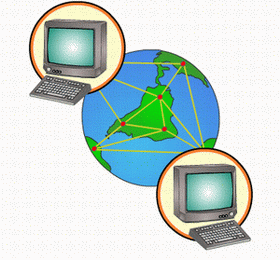Networking: Investors eye power-line trend

Institutional and individual investors are eagerly examining prospects in the so-called broadband over power line (BPL) market and are helping finance proof-of-concept projects in the field, experts tell UPI's Networking.
The interest comes as utilities are embracing a "validate and endorse" approach to BPL, said John J. Joyce, president and chief executive officer of Ambient Corp., a developer of technologies for power companies and multi-unit dwellings, based in Newton, Mass.
The customers include one of the largest utilities in the United States, which has deployed broadband networking over power lines on its electrical distribution system and is now expanding that effort into a 700-home pilot project in the Southeast.
Other partners include Con Edison and EarthLink, a spokesman told Networking.
These fast-track projects helped the company late last month close a $10 million round of financing to "migrate" its technology to a next-generation platform, said Joyce.
The technology has been in development for six years and works on medium and low-voltage distribution power grids. Proprietary coupling and telecommunications technologies allow utilities to use their existing medium and low-voltage power lines as high-speed data pipelines, which are capable of delivering broadband Internet and telephony along with conventional utility services. For consumer broadband applications, developers report delivering bandwidth of more than 4 Mbps to the customer.
What's more, other applications, like surveillance and remote monitoring of industrial processes, are also online.
Experts note that there are essentially three technologies for home networking on the power line, including UBP, X-10 and Insteon, which was developed by SmartLabs, a rival of Ambient.
Insteon links power lines plus wireless radio frequency (RF) technology, creating essentially a "dumb" network for transporting low data rates, but one that is ideal for transmitting the right amount of data to connect devices together in the home, a spokesman for Insteon told Networking.
These dumb networks are often linked with bridge software programs by LifeWare and others that support a connection between multi-media networks and home control networks. Experts at the Digital Home conference concluded recently that home control is projected to be a market that is about to see explosive growth.
But U.S. companies are not the only ones powering the trend, Chano Gomez, vice president of strategic relations and marketing for DS2, a power-line networking company based in Spain, told Networking.
A supplier of high-speed power line networking (PLC) chipsets for in-home, high-definition networking, DS2 recently reached a partnership to develop new products based on DS2's 200 Mbps PLC technology with Taiwan-based Cameo Communications Inc., an international networking products maker.
The companies will develop cheap, high-performance PLC networking products driven by DS2's current and next-generation chipsets, including wall-plug format adapters in addition to a variety of different consumer networking device applications. "The idea is that you can deliver high-speed broadband access in every room without the need to run new cables," said Gomez.
The technologies will support applications like online gaming, whole-house audio distribution and high-definition video streaming, said Gomez.
The companies demonstrated a new wall-plug adapter based on DS2 200 Mbps technology during Computex Taipei 2006 last week and indicated the first DS2-based Cameo products will begin shipping at the beginning of this month, Gomez told Networking.
In addition, last week XAVi Technologies Corp. announced its new home networking product line powered by DS2 powerline chipsets, enabling users to easily transform an entire home's power outlet system into a secure DSL/Cable connection without any additional wiring. The idea is to provide consumers with the much-hyped "triple play" services, including "simultaneous high-definition television, Internet access, and voice over IP," said Wenston Lee, CEO of XAVi.
Copyright 2006 by United Press International





















